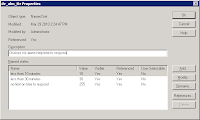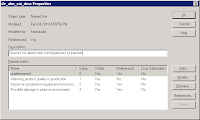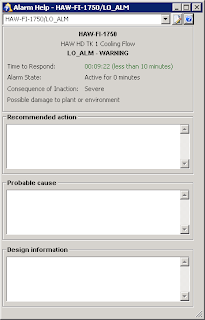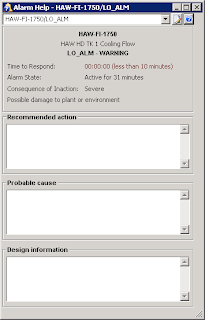Just a quick follow up to my post yesterday about the new Alarm Help in Version 11 of DeltaV - I got a couple of questions along the lines of "what if we've got VCAT enabled? Does it still work?"
I'm happy to report it still works fine. To be sure, I launched DeltaV Operate from the DeltaV Desktop, called up Alarm History from a module faceplate, clicked on the paper and pencil icon, and changed the Consequence of inaction from Severe to Serious and the Recommended action text. Nothing special happened until I pressed the save button, at which point the standard VCAT Control - Messages dialog box popped up and indicated a check out and an immediate check in of my module:
This is probably something operators have never seen before, but once they understand, I don't think it'll be an issue. Pressing Download did its usual thing and my change took effect.
So then I was curious (what, me curious?) what a Show Differences from VCAT would look like. As you might think, there were no visual differences, but switching to textual differences gave me this:
A couple of things to note - the titles of the three text boxes in the Alarm Help are very generic in the schema (Help Text 1, Help Text 2, Help Text 3). And while this matches the new function security names, they don't match up with the actual Alarm Help dialog. I'll report this back and see if a change can be put in before the general release of V11.
The other "oh, by the way" is one and only one instance of Alarm Help can be running at a time. So if Alarm Help has been launched from the Windows Desktop (alarmhelp.exe), it won't launch from the DeltaV Desktop (the reverse is also true). Just a safety tip.





















